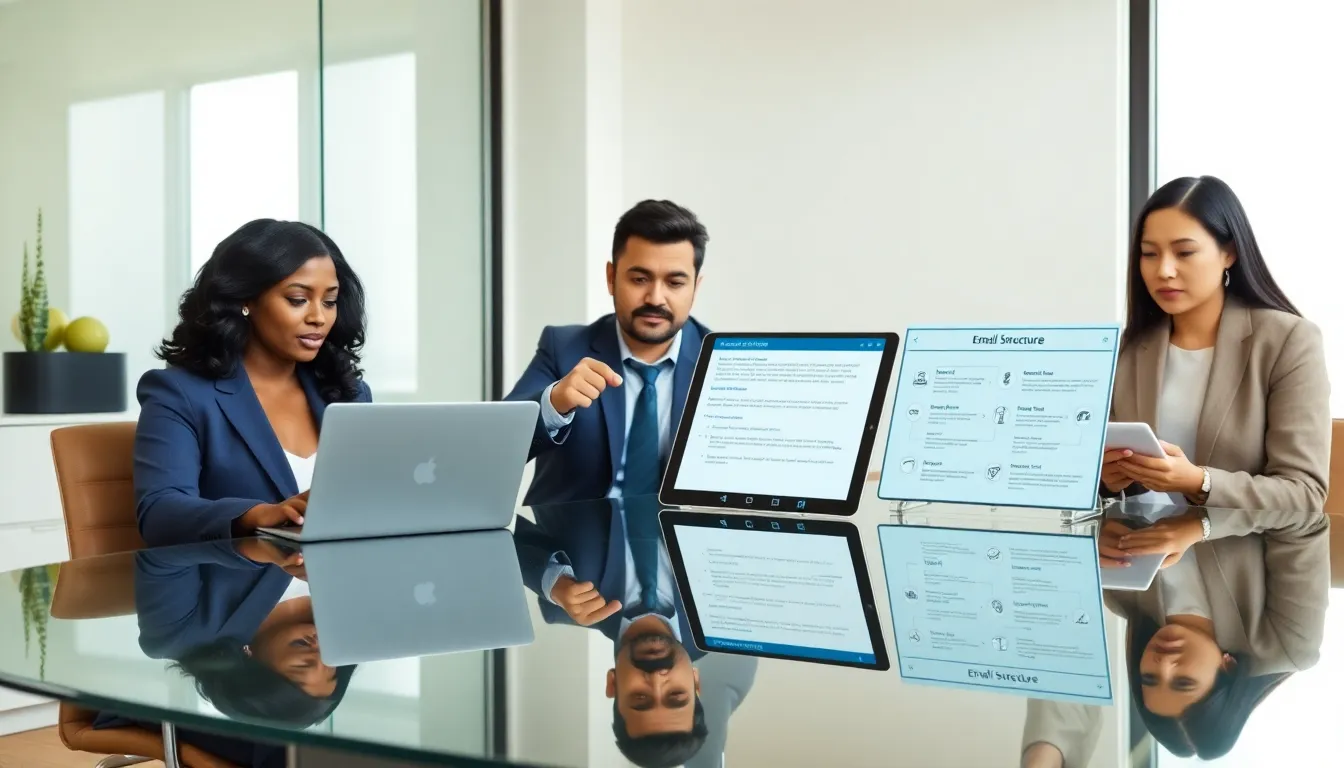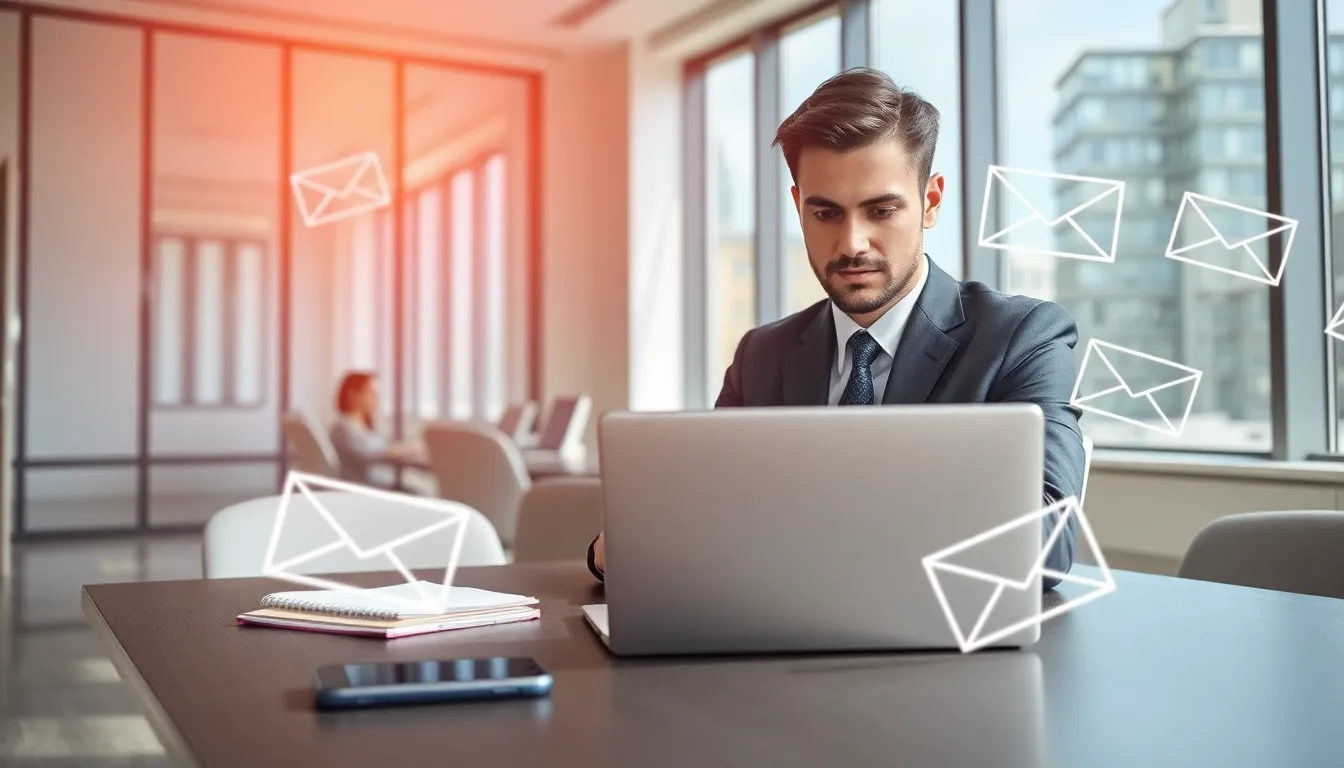Table of Contents
ToggleEmail communication is akin to digital fine dining. Get it right, and it’s a feast for the senses: get it wrong, and you’re left with a cold, rubbery casserole of confusion. If you’ve ever stared blankly at your inbox, wondering how to articulate your genius, or whether you really need to send that email at all, you’re in the right place. In this guide, we’ll uncover the secrets to navigating the labyrinth of email etiquette, composition, and management, ensuring you leave the digital table satisfied and, importantly, understood.
Understanding Email Communication

The Importance of Effective Email Etiquette
Email isn’t just a tool: it’s a necessity in today’s fast-paced world. Mastering effective email etiquette is essential for successful interactions. You wouldn’t walk into a meeting in your pajamas, right? Treat email with the same level of respect. Using proper greetings, a clear structure, and an appropriate sign-off can make all the difference in how your message is received.
Good email etiquette not only enhances professionalism but also builds trust. Recipients appreciate when messages are clear and respectful, fostering better relationships, whether with clients, colleagues, or even your enthusiastic fan club.
Common Email Formats and Structures
A well-structured email follows a straightforward format: a strong subject line, an introduction, the body, and a closing signature. It’s not rocket science, yet so many miss the mark. Begin with a relevant subject line that signals the content of your message. Then, in the opening lines, briefly introduce your purpose. This keeps the reader engaged right from the start.
Throughout the body, use clear paragraphs. Bulleted lists can help in conveying complex information without overwhelm. Finally, a friendly closing line can soften the message, leaving a positive impression, even when delivering less than stellar news.
How to Compose a Professional Email
Elements of a Strong Subject Line
The subject line is the doorway to your message. It often determines whether your email gets a quick read or is relegated to the ‘read later’ pile. Aim for clarity and brevity. Think of it as the headline of a newspaper article. It should entice the reader, but quickly inform them of what lies ahead. Avoid vague phrases like “Update” and try something more explicit, like “Quarterly Sales Report Insights.”
Crafting a Clear and Concise Message
Get to the point. Too often, writers meander through their thoughts as if they’re walking through a maze. Structure your message clearly. State your purpose in the opening lines, supporting details in the body, and include a clear call to action at the end. This not only improves comprehension but also saves everyone’s precious time, because let’s face it, we all have better things to do than decode a rambling email.
Tips for Using Tone and Language Appropriately
The tone of your email can set the entire mood of the conversation. For a professional setting, maintain a respectful and polite voice. That doesn’t mean you have to banish personality entirely: a sprinkle of warmth can engage your reader. Know your audience. If you’re emailing a peer, a more relaxed tone might be acceptable, whereas a supervisor or client may warrant a more formal approach.
Managing Email Overload
Best Practices for Organizing Your Inbox
An overflowing inbox can make anyone feel like they’re drowning in information. A key solution? Organize. Create folders for different projects, priorities, or types of emails you receive. This categorization makes finding crucial messages a breeze. Consider archiving old emails. They clutter your space but can be retrieved if necessary, much like that old shirt you never wear but can’t seem to discard.
Techniques for Prioritizing Emails
Not every email is created equal: some are urgent, while others can wait. A simple method for prioritization is to flag or star critical messages. Also, consider using a triage approach: address urgent emails immediately, schedule time for important ones, and defer less important messages for later. This strategy helps you focus on what truly matters.
Strategies for Reducing Email Stress
Exploring Alternatives to Email
Email isn’t always the best communication tool. For quick questions or team updates, consider instant messaging apps or collaboration platforms. These alternatives can reduce inbox clutter and often yield faster responses. Don’t hesitate to promote a quick chat or a face-to-face meeting when the situation calls for it. No one enjoys waiting an eternity for email replies.
When to Use Other Communication Tools
Understanding when to step away from email is crucial. Sometimes a phone call or a video meeting can convey tone and nuance far better than a typed message. Use emails for detailed announcements or important information but lean on real-time communication for brainstorming or when the subject matter is complex.
The Future of Email Communication
Emerging Trends in Email Usage
The landscape of email communication is evolving. New tools and technology are popping up, promising to simplify our lives. Features like interactive emails and smart reply suggestions are paving the way for a more efficient email experience. Keep an eye on these trends: they could revolutionize how you interact with your inbox.
The Impact of AI on Email Management
Artificial Intelligence is also making its mark, with tools that prioritize emails, suggest responses, and even analyze tone. AI can help manage the overwhelming amount of information we find in our inboxes, allowing users to focus on what really matters while letting technology handle the grunt work. As AI continues to advance, those spreadsheets full of attention-seeking emails may become a thing of the past.





